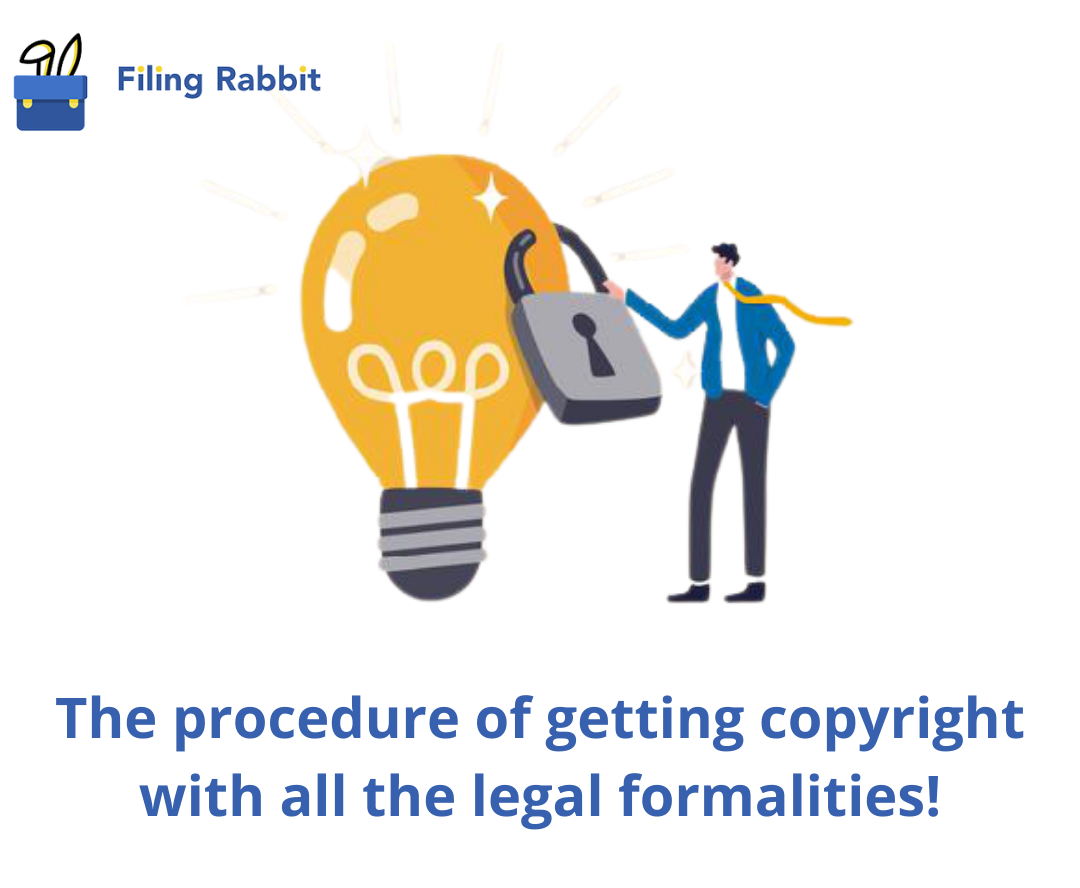
The procedure of getting copyright with all the legal formalities!
May 08,2022
Copyright is a right that is given by law to the creators in the art and literature area where you can make your work unique with copyright so no one can copy your work. Copyright is nothing but having the right to use it, let other people use it, and make money through it as a creator or owner of that specific material Copyright comes under the Intellectual property and intellectual properties handle by the government. Copyright law is regarding the work which is related to music, cinemas, fashion, performance, dance, artistic work like painting, books, and even the computer software has the right to copyright. . Every work is not prohibited for use. There is work as a research paper, study material, reviews, news reporting, library, and school legislatures. At first, this law was only applied for copying books but now it covers most of the area. This law varies as per region or country but up to some level these law statements get standardized internationally which is called as “Berne Convention”. In some countries’ jurisdiction, copyright owners have a moral right too. The real need for copyright occurred after the invention of the printing press in Europe. In the 1400 – 1500 century printing press-formed in leading European countries like England and France as the result that copying a book many times become very cheap and required less time. As a result of this, the literacy rate of European countries increases rapidly in the 16th, 17th, and 18th centuries. The first copyright is given to Richard Pynson successor to William Caxton in 1518.
In India first copyright act was approved in 1847 during East India Company rule in India, it was an imitation of England copyright law. This law is restored by the copyright act of 1914 which is the first modern copyright law of India. The new law which is still applicable in India formed after getting independence in 1947 on 21 st of January 1958 replacing the previous act of 1914. This act is popular by the name ‘The Copyright Act of 1957’. According to India’s copyright act, it forms 2 categories by applicability-
1) Literary, Dramatic, Musical and artistic work – Until the author is alive + sixty years
2) Anonymous and pseudonymous works, Posthumous work, Cinematograph Films, Sound records, Government work, Public undertakings, International Agencies, photographs – until sixty years starting from next year following the year according to the calendar in which the work is first published.
This act is amended 5 times till now in 1983, 1984, 1992, 1994, 1999, and 2012. The registration process of copyright is very simple which contains only 3 steps –
1) Application – You have to apply to an e-filing facility, speed/registered post, or by physically going into the office. If you have multiple works and you want copyright for all of them then you have to apply for every work. Different types of work required different fees. You will get an identification number for future use.
2) Inspection – After getting the identification number there is 30 days period in which the copyright examiner reviews your application that period if any objection arises then the registrar sends the letter to both parties and then the registrar does the fair hearing. If you do not get any objection you’re good to maneuver on next step.
3) Registration – This is the final process. In this process, the registrar might ask you for a few more documents for verification. When it’s done the registrar will enter your details within the copyright register and can issue you a certificate of registration. When you get the ROC means Register of copyrights congratulations you’ve got the copyright of your material now.
Hearing of Copyright –
Hearing happens when any objection arises on applied copyright. When the application gets filed registrar gives their final appeal on copyright after 3 months. Raising any objection against copyright is only valid for 3 months after that only in severe or rare cases the objection may arise. For raising an objection appeal should be done at IPAB(Intellectual Property Appellate Board). If the copyright applicant is succeeded to fulfill all the legal formalities and if they are applicable for it then the registrar files their copyright in the copyright register. But if the applicant fails and the work is not legal then the application gets an end. Of course, applicants again file a copyright application but they will need the proper and legal evidence of their work, or else it will again drop out.
Documents that will need for the copyright –
For getting copyright we need some documents-
1) 2 copies of your work which you’re getting to publish and if it’s already published then 3 copies of it
2) Information of applicant like name, address, nationality, email address, mobile number, and information regarding title and language of your material.
3) Authorization letter if the work isn’t done by the applicant. Also the name, address, nationality of the author. If the author is dead then the date and death certificate is required.
4) If the applicant isn’t the author then a no-objection certificate is required from the author.
5) If any person’s photo is appearing in the material then no-objection certificate from that person.
6) If the work is already published then the date and address are required.
7) Information regarding year and country of publication.
8) If copyright is of software then the source code and object code also required.
9) If that work is used on the product then a no-objection certificate from the trademark office is required.
Having the copyright is the most crucial thing because it gives you legal rights to your work. Even in business and this digital era of computers and the internet having copyright means you are the one and only owner of your work.
Bhagyashree Shelke


